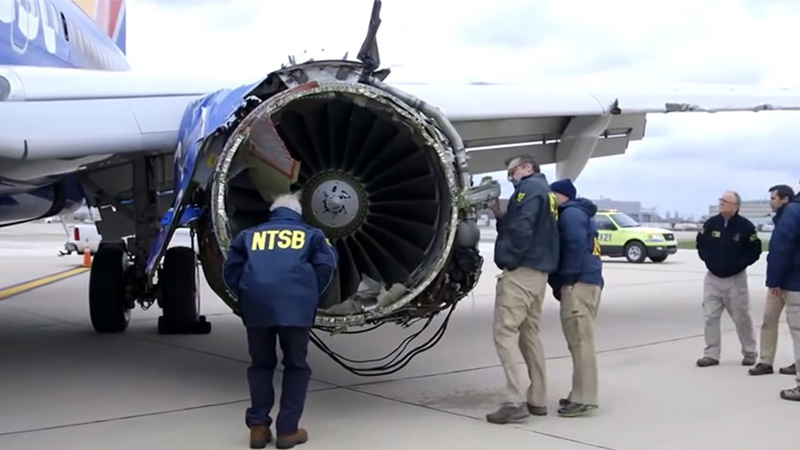Southwest fatality creates rush for ultrasound inspections
By Keith Button|April 19, 2018
Engine maker CFM International had for months called for inspections on aggressive schedule
When the FAA sought public comment last year on a proposed rule requiring inspections of certain airliner engine fan blades, Southwest Airlines resisted, saying it would need 18 months to schedule and inspect the 732 affected engines in its fleet.
Southwest will now try to achieve that in one month, following Tuesday’s deadly accident in which a blade in the left engine of a Southwest Boeing 737-700 broke off, spraying debris and leading to the death of a passenger. The engine cowling was found in Bernville, Pennsylvania. Southwest Flight 1380 was flying from New York to Dallas when it had to make an emergency landing at Philadelphia International Airport.
CFM International, the joint venture of Safran Aircraft Engines and GE Aviation that makes the CFM56-7B engines, announced Wednesday that it will work with Southwest to complete “accelerated” ultrasonic inspections of the blades within 30 days. About 40 GE and Safran Aircraft Engines technicians will assist Southwest with the inspections.
The stakes are high for Southwest, because as CEO Gary Kelly noted in a Tuesday press conference, the airline’s entire fleet consists of 737-700s, each equipped with two CFM56-7B engines.
CFM has long been worried about the state of fan blades on these engines, some of which have many thousands of flight cycles, defined as the period from when the engine is started to when it is shut off. Last year, CFM recommended in a service bulletin that airlines remove certain fan blades and inspect them with ultrasonic devices “as soon as possible,” and no later than Sept. 24, 2017. The recommendation applied to engines with more than 15,000 flight cycles.
At that time, CFM said the ultrasonic inspections would specifically look for cracks in the “dovetail roots” where the fan blades join the hub at the center of the fan, and that each inspection would take about two man-hours.
Robert Sumwalt, chairman of the U.S. National Transportation Safety Board, said in the video of a Tuesday press briefing that the blade had separated at the hub of the fan and that there was evidence of metal fatigue where the blade separated.
Kelly said in the Tuesday briefing, viewed by video feed, that the engine had been inspected on April 15, but that he did not know what that inspection covered. The engine had 40,000 flight cycles since the plane was delivered to Southwest in 2000, including 10,000 since its last overhaul, Kelly said.
The FAA’s proposed rule released in August 2017 would have required inspecting some of the fan blades within six months for engines with more than 15,000 flight cycles since the last shop visit, or within 18 months for those with 15,000 or fewer flight cycles. In public comments on the FAA proposal, CFM recommended that the FAA’s proposed 18-month inspection period be shortened to 12 months.
Airlines including Southwest, whose representatives did not return calls and emails, posted several objections to the proposed rule. The public comment period closed in October 2017, and the FAA had not taken action at the time of the Southwest accident.
The European Aviation Safety Agency issued an airworthiness directive on March 26, 2018, calling for CFM’s recommended inspections to be implemented by Jan. 2, 2019.
The image at the top is taken from an NTSB video shot at Philadelphia International Airport after Southwest Flight 1380 made an emergency landing there on Tuesday.





